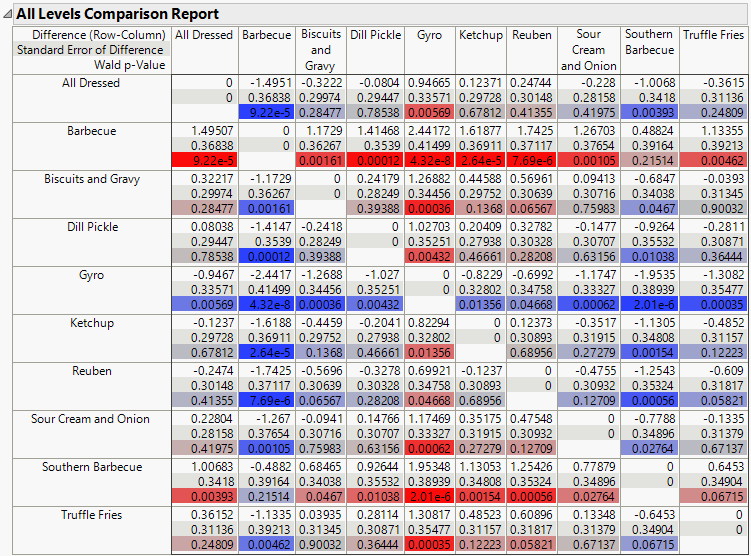MaxDiff
Fit Models for MaxDiff Experiments
Use MaxDiff (maximum difference scaling) as an alternative to standard preference scales to determine the relative importance of items being rated. MaxDiff forces respondents to report their most and least preferred options. This often results in rankings that are more definitive than rankings obtained using standard preference scales.
The MaxDiff platform enables you to do the following:
• Use information about respondent (subject) traits as well as product attributes.
• Integrate data from one, two, or three sources.
• Obtain subject-level scores for segmenting or clustering your data.
•  Estimate subject-specific coefficients using a Bayesian approach.
Estimate subject-specific coefficients using a Bayesian approach.
• Use bias-corrected maximum likelihood estimators (Firth 1993).
Figure 5.1 MaxDiff All Comparisons Report
